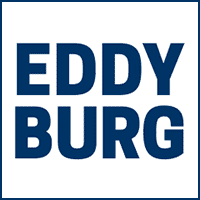

There are alternatives to the huge and costly dams. These alternatives not only can protect Venice, but also can restore the Lagoon's equilibrium. We provide an outline of key measures that need to be taken.
An action plan to protect Venice...At the Lagoon's three outlets to the sea:
Reduce the depth and cross-section of the Lagoon's outlets with flexible, reversible methods. Reduce also the depth of the shipping channels that cut through the Lagoon, in particular the oil tanker channel to Marghera. Recent studies have shown that these measures would significantly cut flooding in Venice - a fact that the Consortium behind the dams has finally admitted.
Remove oil tanker traffic from the Lagoon, and construct an outer port alongside the Lido island for the largest cruise ships - as already built in Monte Carlo. The huge tankers and cruise ships would not enter through the shallower channels. These measures are also important in and of themselves. Already in 1973, an Italian law calls for the removal of oil tankers from the fragile Lagoon! And the huge cruise ships that now pass St. Mark's Square dwarf the city and risk eroding its foundations.
Build new jetties outside the Lagoon to block the southern winds that create tide surges.
Develop compatible projects to close the Lagoon's outlets in the event of extreme surges. The Venice City Council recently reviewed a proposal called ARCA, which effectively reverses the Consortium's dams and their heavy environmental impacts: instead of gates in huge underwater foundations, ARCA proposes floating structures that can be filled with water and sunk in place when needed.
Study future methods of coastal protection in case of severe sea-level rise.
And throughout the Lagoon and surrounding areas:
Continue and expand local measures against flooding, such as ongoing work to raise streets in Venice. Most important is the protection of St. Mark's Square, one of Venice's lowest points.
Prohibit natural gas extraction in the upper Adriatic and its risk of further subsidence (falling land levels).
Re-open the "fishing valleys" to the tides (though preserving their fish farming), as well as other areas. This would allow exceptional tides to expand further in the Lagoon, reducing flooding in Venice.
Reduce risks of flooding on the mainland - in heavy rains, flood waters can flow into the Lagoon and towards Venice.
Protect and recover the Lagoon's eroded salt marshes with environmental engineering techniques, instead the coarse methods historically used by the Consortium. A 1999 LIFE Project, financed by the European Commission, tested techniques for salt marsh recovery.
Reduce motorboat traffic, whose waves and screw wash erode salt marshes (as well as Venice's foundations).
Cut water pollution in the Lagoon. The deep channels and strong currents have had one positive effect, flushing heavy pollution out of the Lagoon. Along with healing these deep cuts and restoring the Lagoon's equilibrium, pollution to the Lagoon (from industry, urban centres and intensive agriculture) has to be reduced.
Expand monitoring in the Lagoon and throughout the upper Adriatic to track sea-level rise.
Renew experiments to raise Venice and the islands of the Lagoon, following earlier tests on the island of Poveglia.
The equilibrium between sea and Lagoon, between land and water and between fresh and salt water "is the reason that the environmental and human mosaic that defines the Lagoon itself has survived", according to Italy's National Environmental Impact Commission. The Commission concluded that this equilibrium can only be guaranteed with an "articulated system of works and actions" that are testable, reversible and gradual, as Italy's laws for Venice require.
Here the original text in the site of Italia Nostra - sezione di Venezia